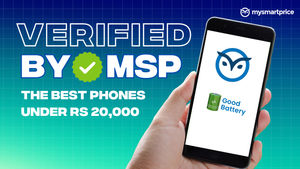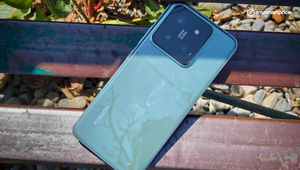
Replying to “thank you” messages is essential as it shows appreciation for the person’s gratitude and kindness. In professional settings, responding to expressions of gratitude is crucial for maintaining a sense of professionalism. This article explores various appropriate “Thank You” responses based on different occasions, situations, and relationships. In this blog, we’ll help you master the art of responding to “thank you” gestures, allowing you to leave a lasting impression that resonates with the sentiment behind those two simple words. Your responses will not only mirror the authenticity of the initial thankfulness but also exemplify your consideration and attentiveness in fostering meaningful connections. If you’re interested in discovering suitable ways to respond to expressions of gratitude, read on.
Different Ways to Respond to “Thank You”
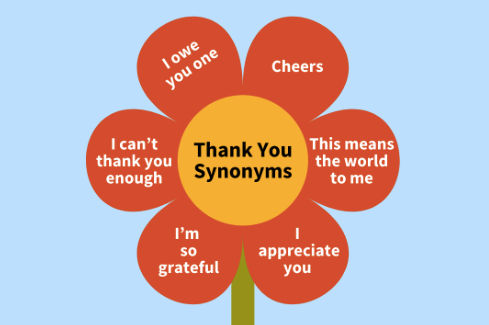
In various scenarios, expressing gratitude with a “Thank You” is essential. From responding to thank-yous in Social Media, Chat, Email, Work, Birthday Wishes, to acknowledging gifts, there are different ways to convey thanks. Read on to discover the various approaches to express your appreciation!
How to Respond to Thank You in Social Media and Chat

When someone expresses thanks in a social media or chat exchange, your response should consider the situation and your relationship with the person. “You’re welcome” is a safe and courteous option. Being genuine and sincere in your response shows your willingness to help and appreciation for their gratitude. Here are some guidelines for responding to a “Thank You” message:
- “You’re welcome”
- “No problem / Not anything to worry about / No worries”
- “Anytime”
- “Glad that I could help”
- “You earned it”
- “Thank you for the sweet words” or “It was my pleasure”
Adding a smiley emoji can convey friendliness. Emojis, stickers, and GIFs are popular in online interactions, allowing for the expression of emotions and ideas across various platforms. Their use enhances online conversations, making them more enjoyable and human-like, bridging the gap between digital and real-life dialogues.
How to Respond to Thank You at Work
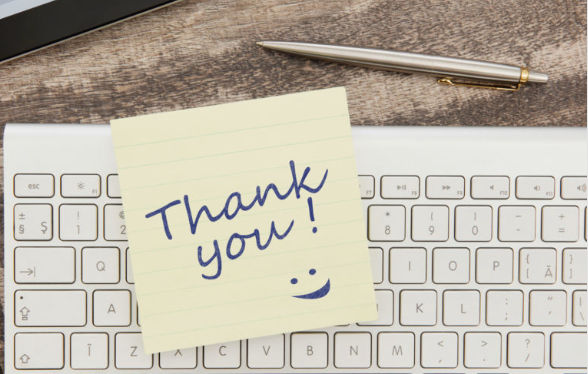
Maintaining professionalism, decency, and swiftness in responding to “thank you” messages at work is crucial. Keep the reply concise, avoid self-deprecation, and show appreciation for the team’s efforts. Address individuals correctly by their job title, proofread for grammatical errors in written responses, and consider the chosen communication method. Express sincere gratitude and willingness to help in the future. Here are some appropriate responses for the workplace:
- “Thank you very much.”
- “I sincerely value your assistance.”
- “Many thanks for all your help.”
- “Many thanks for each and every one of your assistance.”
- “I’m thankful for your support.”
- “I want to thank you for going that extra mile.”
- “I really value your advice.”
- “Thank you for having been such a vital team member.”
- “I am unable to thank you enough for all of your hard work.”
By using these responses, you can maintain a professional and courteous tone in your workplace communication.
How to Reply to Thank You in Email

When replying to a “thank you” email:
- Maintain a courteous and polite tone.
- Respond promptly and sincerely convey appreciation.
- Personalize the reply using the sender’s name.
- Keep the response brief and personalized.
- Avoid generic or automated replies.
- Match the tone to the professionalism of the original email.
- Add a personal touch if appropriate.
- Double-check for spelling and grammatical errors.
- Ensure the email signature aligns with your business nature.
- Offer additional help if relevant to demonstrate commitment.
Here are some ways to reply to “Thank You” in an email:
- “You are most welcome.”
- “It was my pleasure; glad I could help.”
- “You earned it.”
- “Whenever / At all times, I’m always ready to assist.”
- “Thank you so much for your warm words.”
- “Thank you for expressing your gratitude.”
- “Thank you for trusting me to assist you.”
By using these responses, you can maintain a courteous and professional tone in your email interactions.
Also Read: What Do CC and BCC Mean in Email and How to Use Them
How to Respond to Thank You for Birthday Wishes
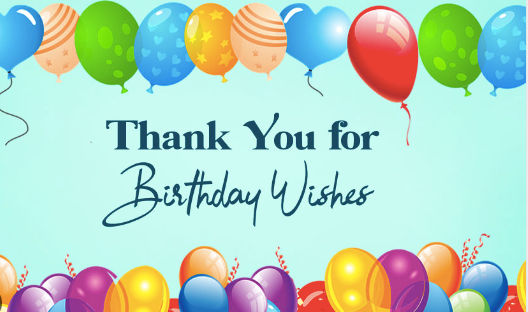
When responding to thank-you messages for birthday wishes:
- Be quick in your response.
- Show genuine thankfulness for the affection and wishes received.
- Maintain an affectionate and enjoyable tone.
- Celebrate birthdays with utmost joy and pleasure.
- Appreciate the wishes and greetings received.
- Add a touch of playfulness and positivity to your messages.
- Express heartfelt gratitude to those who love and care about you.
Some of the ways in which a person can respond to “Thank You” for Birthday wishes are:
- “Thank you very much!” Thank you for your nice birthday greetings.”
- “Many thanks for the wonderful birthday wishes!” I sincerely appreciate it.”
- “I’m so appreciative of everyone’s birthday wishes. Thank you for making my day so memorable!”
- “Thank you for your lovely birthday greetings. It means a great deal to me.”
- “I consider myself fortunate to have such wonderful friends and family.” Thank you for your birthday greetings!”
- “I appreciate the overwhelming outpouring of affection on my birthday.” Thank you for your kind words!”
- “Your kind words added to the joy of my birthday.” Thank you very much!”
- “I’m moved by all of the genuine birthday greetings. Thank you for joining me in my celebration.”
- “Thank you for all of your birthday wishes. “I appreciate you making me feel special.”
- “Your birthday greetings made me very happy.” Thank you for your kind words.”
Also Read: Birthday Wishes for Sister: 200+ Heartfelt Birthday Wishes for Sister to Celebrate Her Special Day
How to Respond to Someone Thanking You for a Gift
When someone appreciates you for a gift:
- Respond promptly and sincerely, addressing them by name.
- Reference the gift to show that you remembered it.
- Be friendly and honest in your response.
- Avoid discussing the cost of the present.
- Use language appropriate for your relationship with the person.
- Offer future assistance if needed.
- Check for errors before sending to ensure a meaningful response.
- Show your appreciation, as it will deepen your bond with the person.
How to Respond to ‘Thank You’ to a Family Member or Friend
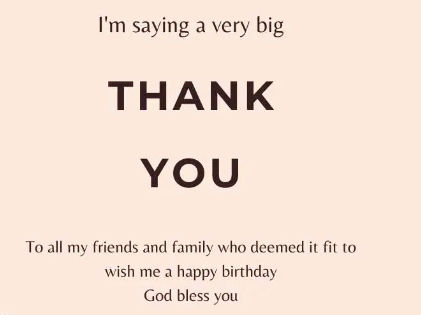
A few ways in which you can respond to “Thank You” to a family member or a friend are mentioned below:
- “Thank you very much!” I’m happy that I could assist.”
- “There is nothing to worry about at all. Please let me know if you would like any support.”
- “You’ve deserved it!” I’m always willing to help you.”
- “It was an honour. It makes me happy to see you smiling.”
- “Don’t bring it up. “You know I will go to whatever it takes for you.”
- “You are like family, and supporting you is precisely what friends are for.”
- “It’s my joy. Thank you for being such a wonderful friend/family member.”
- “Your appreciation means a lot to me. “Our friendship means a lot to me.”
- “You’re very welcome. I treasure our friendship/family bond.”
- “At your leisure, my friend/family.”
- “I care about your happiness.”
Common Mistakes to Avoid when responding to “thank you” messages
When replying to a thank-you note from relatives or friends:
- Use an informal tone and address them by name.
- Be sincere in expressing your gratitude, and mention specific reasons you are grateful for.
- Keep the response brief and clear.
- Mention whether you would return the favor in the future.
- Avoid generic messages and try to add a personal touch.
- Consider mentioning the depth of your relationship with them, adding a personal and warm touch to your reply.
FAQs
Is it necessary to respond to every “thank you” message?
Responding to “thank you” texts is generally courteous but not always necessary. A simple “you’re welcome”, or a brief thank-you is usually sufficient to express gratitude. In casual contexts or group chats, a response may not be expected. It depends on the situation and your relationship with the person. However, responding to “thank you” messages is more common in formal or professional situations, as it helps maintain constructive and respectful dialogue.
Can I respond to a “thank you” with just an emoji?
Yes, you can respond to a “thank you” message with an emoji. Emojis are always good at expressing exactly how you feel, and sending a smiley face or stickers is a polite way to express your gratitude.
How do I avoid sounding insincere in my “thank you” reply?
Be authentic and specific in your “thank you” response to make sure that it appears genuine. Respond promptly and with genuine words. To add a personal touch to it, address the individual in question by name. Avoid using general comments or being overly polite.
Should I respond to a “thank you” on social media publicly or privately?
When someone thanks you on social media, you have the option of responding publicly or privately, depending on your relationship and their privacy preferences. Apply your best judgment to decide what seems appropriate and courteous.
What if I don’t know the person well, how do I respond?
If you don’t know the person well, make it basic and respectful. In such a situation, a pleasant and courteous response is adequate. Use statements like “You are welcome!” or “Glad that I could help.” Avoid making the statement too personal.
Why It’s Important to Respond to “Thank You” Messages?
Responding to “thank you” notes demonstrates that you recognize the person’s sincerity and thoughtfulness. When you react, you are making a kind and respectful act that can strengthen your connection with them.
Above, we have mentioned quite a few ways in which a person can reply to a “Thank You” text. Depending on the situation shared between the individuals involved, the method of communication, time, occasion, and other several factors, an affectionate and courteous message or response should be created. It is a good way to show your appreciation and acknowledgement. In a world where gratitude is a universal language, knowing how to respond to a heartfelt “thank you” can make all the difference. Whether it’s a simple acknowledgement of appreciation or a more elaborate expression of gratitude, your response can convey warmth, sincerity, and a genuine connection. This blog explores the art of crafting meaningful replies to expressions of thanks, offering a diverse array of responses that go beyond the standard “you’re welcome.”
From casual exchanges among friends to professional interactions in the workplace, the way you respond to gratitude can reflect your personality, strengthen relationships, and showcase your communication skills. This guide delves into various scenarios, delving into cultural nuances, personalization, and the subtle nuances that distinguish an ordinary response from an exceptional one. Uncover creative alternatives, such as using humor, offering future assistance, or expressing your own gratitude in return. Navigate through scenarios where a more heartfelt or succinct response is needed, and gain insight into the etiquette of replying to gratitude across digital platforms and face-to-face interactions.
